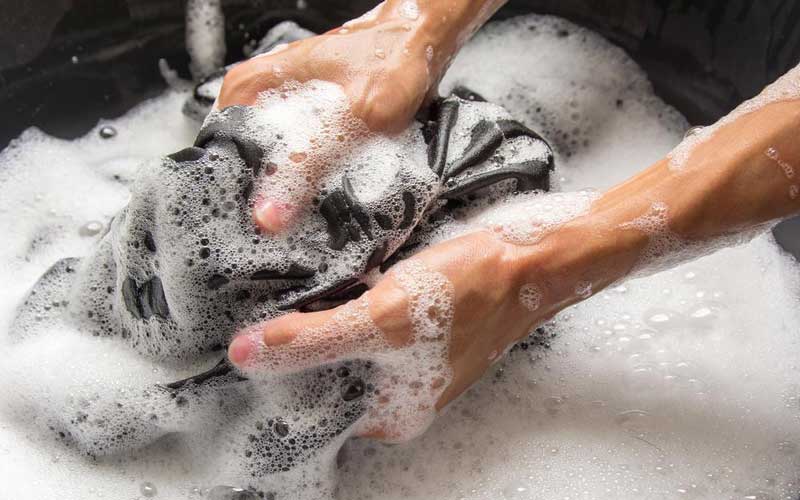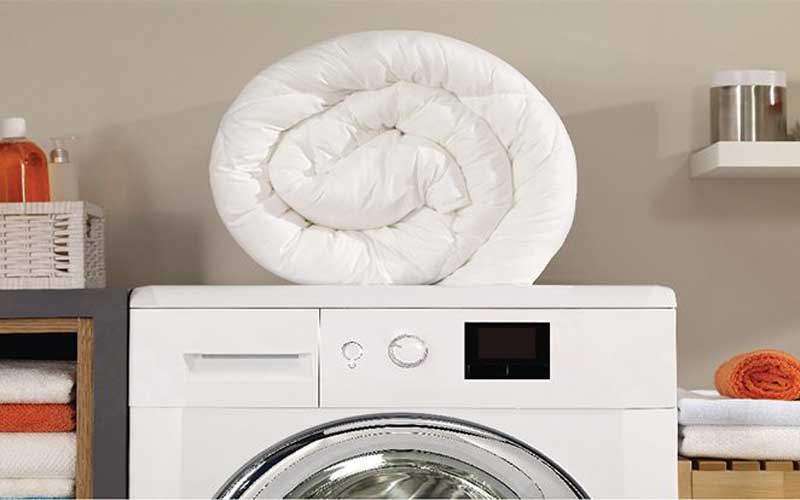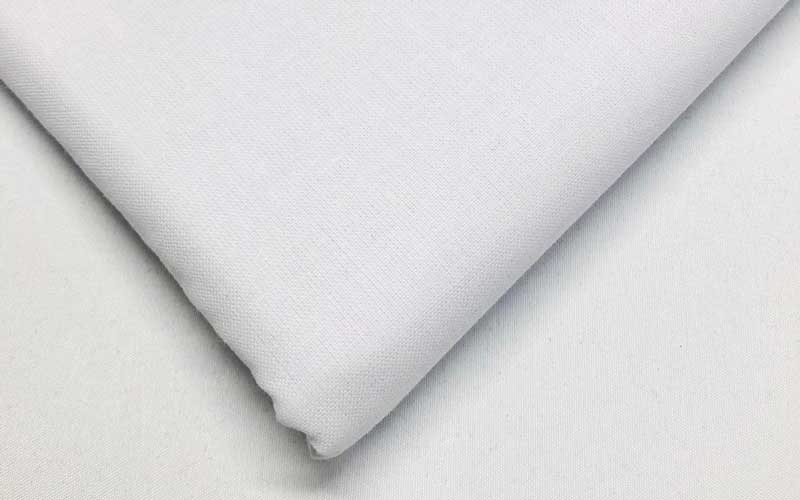We’ve all heard about the fantastic benefits weighted blankets bring, such as improving the overall sleep quality of numerous consumers all over the world. They are known for the ‘Deep Touch Pressure’ therapy which provides a cosy hugging sensation, and the help they provide for people with autism, ADHD, depression, insomnia, PTSD, and many other conditions that might keep someone from falling asleep at night.
If an item is that beneficial for you, you’ll need to learn how to wash, clean and treat it properly in order to receive all the positives that come with it. Most weighted blankets aren’t cheap, which is why you have to keep them in good shape, so they last as long as possible. Here in LightSleeper, we’ve tested over 20 weighted blankets over the course of a year to find the best product at different price points and all the benefits they can bring.
If you’re reading this article, that means you are probably interested in finding more information on how to wash a blanket, and by the end of this guide, you will know:
- How to machine wash or hand wash a weighted blanket
- How to dry a weighted blanket
- Which heavy blanket fillings and cover materials can be washed
- What to avoid when cleaning a weighted blanket

How to machine wash a weighted blanket?
Before you put your heavy blanket in the washing machine, you should pretreat it to remove stains by using a stain remover. What you need is a mixture of a few drops of dish soap and water with which you will gently scrub the surface of your blanket until the appearance improves. If you’re satisfied with the work you’ve done, it’s time to proceed to the next step!
There isn’t one solution that fits all since weighted blankets are designed from different materials. Depending on those materials, you can either use warm or cold water in the washer. What you have to do is check the care tag of your blanket to see the materials it’s been crafted from and the washing recommendations.
The general rule of thumb is that you should start by putting your pretreated blanket inside the washing machine and choosing your laundry detergent (depending on the materials). Then it would be best if you started the washer on the gentle cycle. After the washing cycle is over, you should immediately remove your weighted blanket and let it dry.
Be mindful of the materials used in the craftsmanship of your product, and for more accurate care, read the manufacturer’s instructions on how to wash a weighted blanket.
How to hand wash a weighted blanket?

Some weighted blankets can’t be machine washed, so the best you can do is wash them by hand. The cover materials and the filling of the heavy blanket can prevent you from putting it in the washer, and if that’s the case with you, here are some steps you can follow:
- Fill a big enough container with cold or lukewarm water
- Pour your laundry detergent inside the container and stir so that the mixture is evenly distributed
- Place your blanket inside the container and start kneading it with your hands
- Continue kneading for several minutes
- After that, you should replace the liquid with fresh water and let it sit for a few minutes
- Then its time to remove it from the container to drain it
- Finally, you’ll have to wring any excess water out of it carefully and let it dry
How to dry?

When it comes down to drying a weighted blanket, it boils down to whether your choice can withstand heat or not.
The best way to figure that out is by checking the care tag for any drying instructions. Typically weighted blankets can either be left to air dry or tumble dry on a low heat setting. If you shouldn’t put your heavy blanket in the drier, you can hang it over a well-ventilated structure to ensure its weight is evenly distributed so it doesn’t get damaged. We highly recommend you dry them horizontally and occasionally shake or flip them as well.
However, if you can tumble dry yours, all you have to do is put it in the machine and grab it when it’s dry. The truth is that there are plenty of methods to dry your blanket, but the choice is up to you and the materials your product is designed with. If you’re worried about hand washing it or putting it in the dryer, you can always use a professional service to do that for you.=
What cover materials can you wash?

The filling of the blanket isn’t the only thing you have to consider before washing it. It’s also important to know which cover material can be machine washed and which one you’ll have to clean by hand. Here are some of the most popular cover fabrics:
Cotton
Cotton is probably the most used fabric in the bedding industry, and weighted blankets are no exception. This material is easy to care for, it’s also machine-washable and tolerates most cleaning products. With that said you should be mindful of the temperature and avoid hot water since cotton shrinks.
Wool
Next, we have wool, which is an extremely delicate fabric that quickly shrinks. That’s why we highly recommend you only hand-wash products made from this material. In some situations, you might be able to put it in the washer, but make sure you check the blanket’s label before doing so.
Flannel
Another relatively easy to wash fabric is flannel. All you have to do is pretreat the hardcore stains and then wash it on a gentle cycle. Flannel can also be hung out to dry or tumble dry, which makes it a suitable option.
Lyocell
Lyocell is a specific rayon fibre that’s made from bamboo, which needs to be treated gently during washing. Bamboo is a natural material, which makes it breathable and dust-mite free, but it can’t be washed at a temperature above 30 C.
What to avoid when cleaning a weighted blanket?

Weighted blankets are beneficial for you until their weight is evenly distributed. However, there are many situations in which the filling of a blanket can clump up due to improper cleaning techniques. We want to keep our bedding fresh and clean, but at the same time, we should only wash our blankets when needed to preserve the carefully balanced weight distribution. Here is how to do so:
- Only use cold or lukewarm (no hot water)
- Try to avoid aggressive spin cycles (gentle cycles are prefered)
- Most products shouldn’t be tumble dried
- No aggressive cleaning products should be used (gentle detergents)
- Never iron or try to flatten the inner blanket by putting heavy objects on top of it
These instructions are the general recommendation for such a product on the market. Still, there are numerous brands and even more models, so always read the care label to make sure you are well-informed and have the knowledge to take care of your purchase correctly.
Bottom line
Weighted blankets can be highly beneficial to the quality of your sleep. All you have to do is follow the 10% of your body weight rule and take proper care of them. Some products can be machine washed, while others have to be cleaned by hand. Thrid one can be tumble dried, and some have to be air-dried.
In order to take proper care of your weighted blanket, we recommend you check the care label for the specific product you own. Knowing how to wash your heavy blanket will keep it fresh and prevent any mould or bacteria. Stay clean and fresh! And if you need a new one, check out our best weighted blankets in the UK guide!
No matter why you’re using a weighted blanket, your top priority is to make sure it’s made to fit you and you alone! If you think we missed something on the subject or if you have any questions or concerns, please drop us a line in the comments below, and we’d try to respond as soon as possible!

